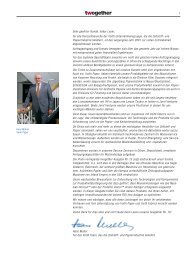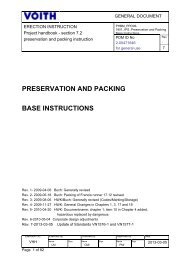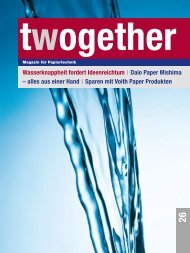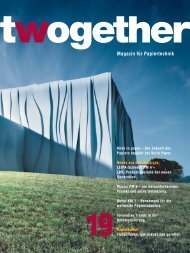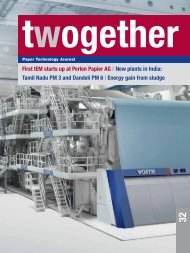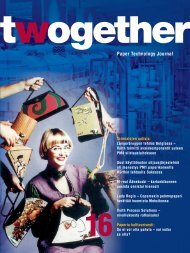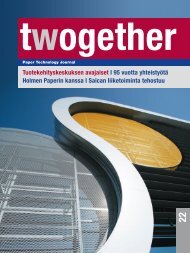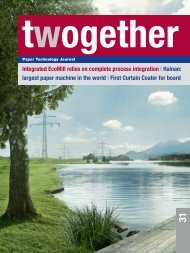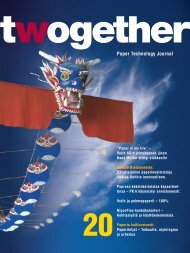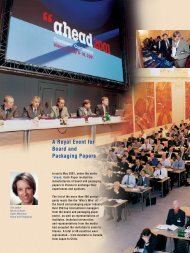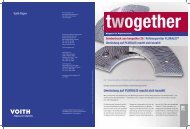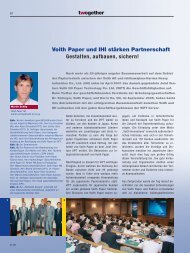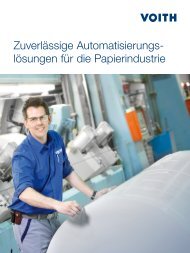Create successful ePaper yourself
Turn your PDF publications into a flip-book with our unique Google optimized e-Paper software.
7<br />
8<br />
Fig. 7: Longitudinal section of a Nipco P Roll.<br />
Fig. 8: NipcoFlex Calender.<br />
Tender<br />
side<br />
Bearing<br />
housing<br />
Roll<br />
shell<br />
Support<br />
beam<br />
conventional Nipco Roll on which the roll<br />
sleeve is hydrostatically supported by hydraulic<br />
loading elements. The fact that<br />
the Nipco P Roll sleeve is directly supported<br />
in the plane of the bearing center<br />
distance makes it independent and position-stable<br />
with respect to the unavoidable<br />
cross shaft deflection. This in turn<br />
permits the most uniform linear load distribution<br />
in cross direction of the press<br />
nip. The loading elements in the NipcoFlex<br />
and Nipco P are characterized by<br />
Pressure<br />
oil<br />
Loading<br />
element<br />
<strong>Paper</strong> Machines<br />
equally large pressure areas, which enable<br />
the joint supply of hydraulic oil to<br />
the rolls with one pressure line.<br />
Calendering<br />
Oil return<br />
Drive<br />
side<br />
Gear box<br />
Shoe nip technology is now also used for<br />
the finishing of board. On the basis of the<br />
proven NipcoFlex technology, the Nipco-<br />
Flex Calender (Fig. 8) has been developed.<br />
In contrast to conventional soft<br />
calender technology, the NipcoFlex Cal-<br />
31<br />
ender is characterized by the functional<br />
separation of the main operating parameters<br />
of nip pressure and dwell time in the<br />
nip. This allows specific thermoplastic<br />
deformation of the paper and board.<br />
Here, too, the possibility of varying the<br />
pressure profile in the nip is of decisive<br />
importance. The first commercial installation<br />
went on stream at the beginning of<br />
this year. Intensive research and pilot trials<br />
are being conducted at the moment in<br />
order to evaluate the potential of shoe<br />
press technology for further calendering<br />
applications.<br />
Outlook<br />
Shoe press technology is today state of<br />
the art in the dewatering of board and<br />
packaging papers as well as graphic papers.<br />
This is proven by the success of<br />
over 400 shoe presses in operation for<br />
these grades. For the newer applications,<br />
pulp dewatering and tissue, the trends<br />
are clear: in addition to the very important<br />
increase in dryness and productivity<br />
for the user, technological result can be<br />
improved still further with shoe presses,<br />
especially for tissue. The latest development,<br />
the use of shoes presses in calendering,<br />
will certainly still require further<br />
trials and also operating experience.<br />
However, the significant advantages of<br />
shoe press technology have already been<br />
confirmed today: the possible variation of<br />
the pressure in MD as well as the independence<br />
of nip width and linear load.<br />
<strong>17</strong>/04



